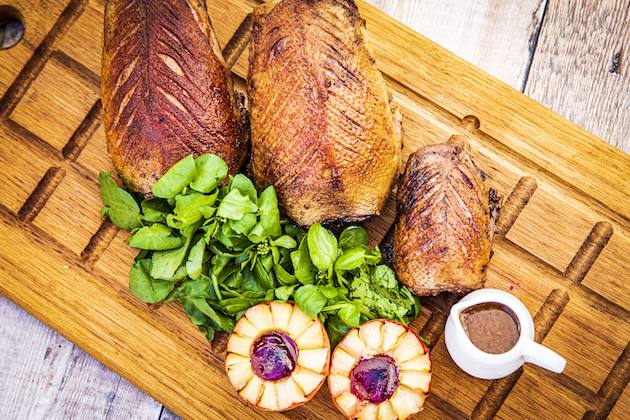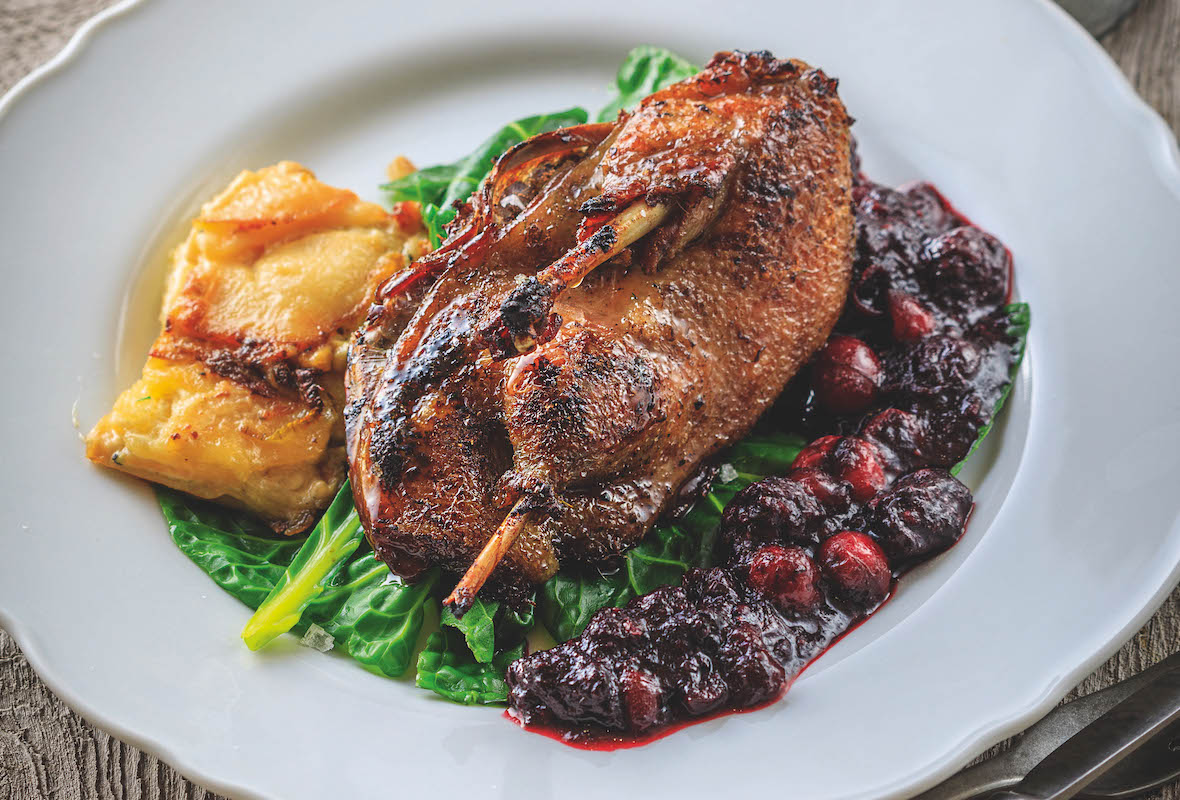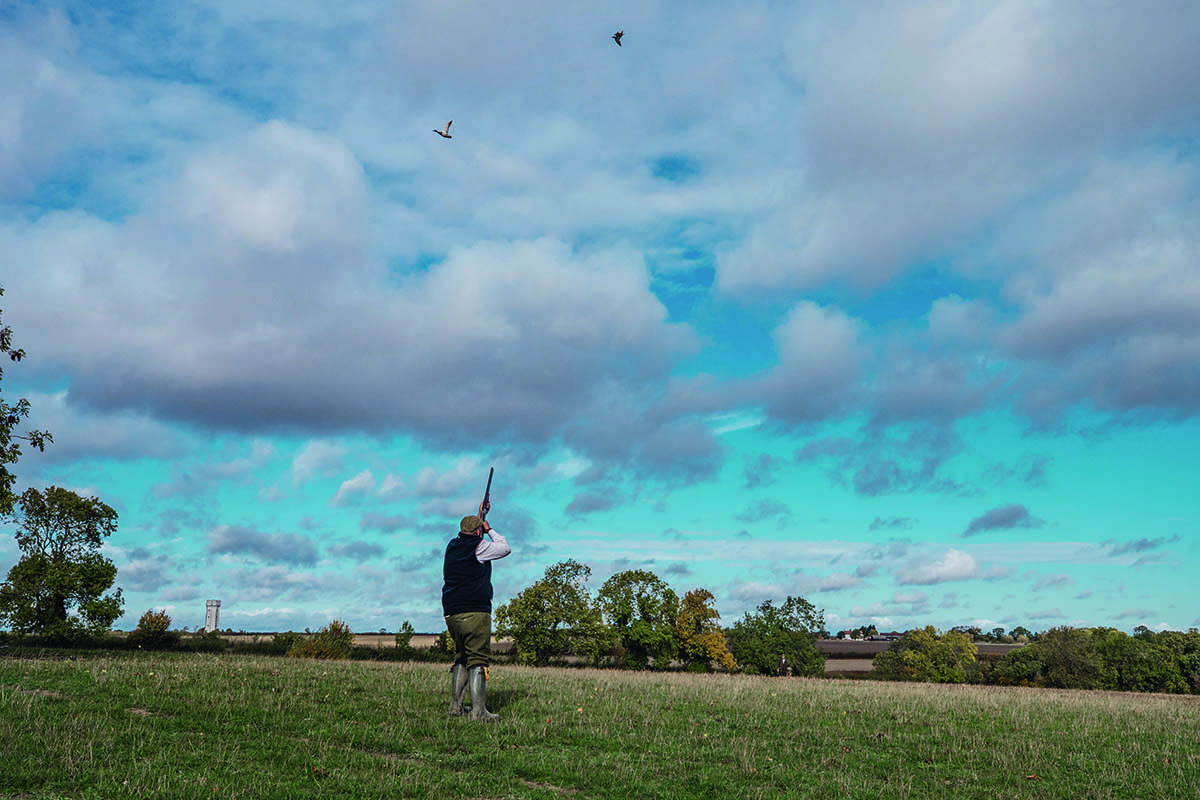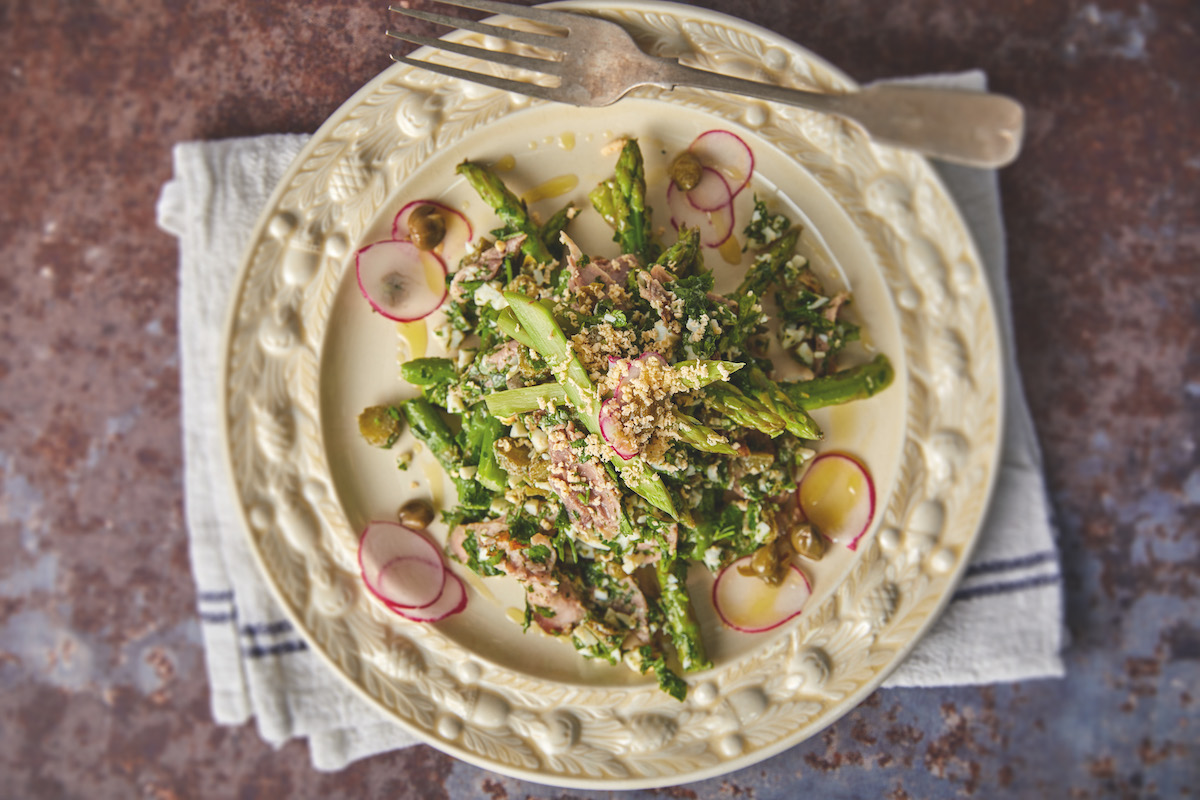Recipe for a trio of duck with redcurrant jelly, glazed apple and game jus
Why settle for one species of wild duck when three can share the stage in a single recipe? José Souto makes a feast of teal, wigeon and mallard for Shooting Times readers. Serves 2 Prep time 30 min.

Trio of Duck with Glazed Apple and Cranberry
There are many species of wild duck to choose from. The main ones are teal, wigeon and, the most common, mallard. Here’s a way of trying all three, very simply. (Read here for information on different duck species.)
Simple trio of duck with redcurrant jelly, glazed apple and game jus
Ingredients
- 1 Teal
- 1 Wigeon
- 1 Mallard
- Oil for cooking
- 1 litre good dark chicken or game stock
- 1 Eating apple
- 2 tsp redcurrant jelly
Method
- Remove the wishbones and legs from the ducks, leaving three crowns. Using a sharp knife, score the duck skin and season the crowns.
- Heat a little oil to smoking hot in a frying pan. Seal the crowns well with colour, basting them in the hot oil to crisp up the skin. Place the crispy crowns on a roasting tray. Preheat the oven to 180°C.
- Chop the legs into small pieces and, in the same pan, fry off the legs until well coloured.
- Take the excess oil from the legs and add to the stock. Bring to the boil and allow to reduce.
- Cut the apple in half, scoop out the centre and add a spoonful of redcurrant jelly.
- Place crowns and apples in the oven. Remove the wigeon and mallard after five to eight minutes. Remove the teal and apples after 12 minutes.
- Pass the reduced sauce. It should be the consistency of single cream.
- Remove the breast from crowns. Serve with apple and sauce.
For the past few years, I have had the pleasure of doing demonstrations on the Wild Suffolk stage at the Aldeburgh Food & Drink Festival, a celebration of all things wild in the region.
The night before the show, all the chefs attend a dinner. It’s here that two of the organisers, Mike Warner and David Grimwood, invite all those in attendance to a duck shoot the following morning.
Most of the assembled celebrity chefs accepted the invitation last year, so we found ourselves heading to a nearby woodland lake at 5am the following day. We assembled in the show car park, waiting for Mike and David to pick us up.
Paired up
A short drive later, we arrived and, in hushed tones, our hosts explained how the shoot would progress. Each non-shooting person was paired with a seasoned shooter and we were ushered toward the lake.
Around the lake, there were a selection of hides, each one containing a bench for two people. We took our places in the dark. When we heard a whistle blow, we could stand up and shoot at ducks coming in. After a few shots — and after the ducks had left — the whistle would sound again and we were told that we should lower our guns and sit back down until more ducks had arrived.
As I took my seat with my companion, we waited with bated breath. Then, out of the gloom, ducks started to pour in, one after the other. We could hear them, but they were hard to make out with the added cloaking of the surrounding trees.
As the light came up, the whistle was blown and off we went. There was an explosion of ducks that lifted from the water — so many that it was hard to pick a target. Many of the less experienced Guns aimed at groups of ducks, as opposed to locking on to one target. It’s a tempting but bad tactic. You can see many, but hit none.
That morning, we bagged a good selection of ducks that were used in the demonstrations during the two days of the festival, with a few left to take home.








